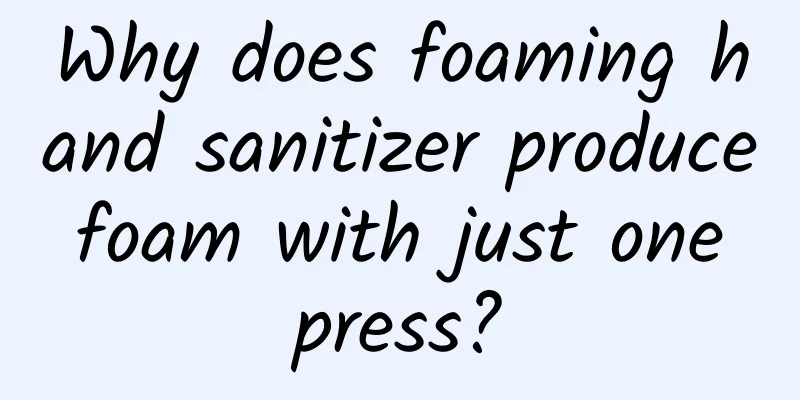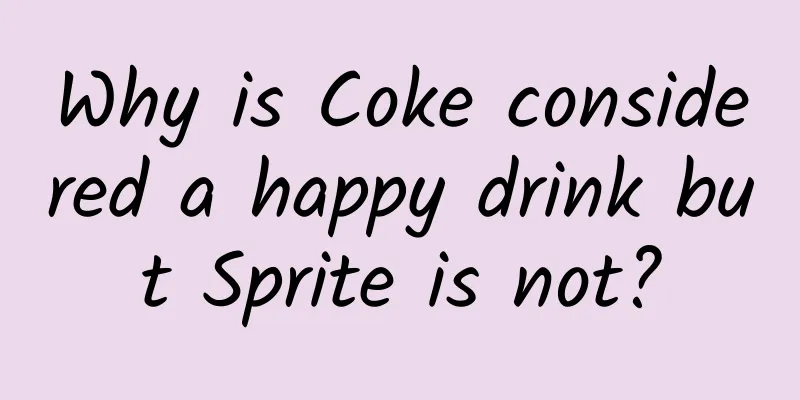Why does foaming hand sanitizer produce foam with just one press?

|
In our daily life, laundry detergent, shower gel, and shampoo are all necessary items for our daily cleaning. They come in different types. Some can produce rich foam by rubbing your hands together, while others are non-foaming. People also have their own preferences in choosing foaming and non-foaming types. For the majority of foam lovers, rich and delicate foam is synonymous with "clean washing". But do you know that there are many scientific secrets hidden behind the small bubbles? Source: A shopping website 1 How are bubbles created? ****Foam is defined as a dispersed system formed by insoluble gas dispersed in liquid or molten solid . Foam is ubiquitous in daily life. For example, if you shake a mineral water bottle, fleeting bubbles may appear on the water surface; if you add some soapy water to the bottle, you will find that compared with the "water bubbles" that burst quickly before, the bubbles produced in the bottle with soapy water last longer and are not easy to break. The same is true for many people's childhood fun of "blowing bubbles". Source: Xinhuanet The difference in the "lifespan" of these two types of bubbles is a manifestation of the different "drainage effects". As we all know, water will flow to lower places due to gravity, so the water on the outer layer of the bubble will naturally flow down. However, some substances in soapy water can counteract the drainage effect, allowing the bubbles of soapy water to exist for a long time. The mysterious substance in soapy water that can counteract the drainage effect is the famous surfactant, which has a resounding name - industrial MSG. It is rich in variety, with more than 10,000 kinds. It can be found in insecticides, pesticides, washing powder, soap, shampoo, and is often needed in the food industry. Therefore, someone once said: "If there were no surfactants, 90% of chemical workers would be unemployed." In terms of composition, surfactant molecules have a typical two-terminal structure: one end is a hydrophilic and lipophobic group, which is easily soluble in water and is called a hydrophilic group; the other end is a lipophilic and hydrophobic group, which is insoluble in water but soluble in oil and is called a hydrophobic group. This two-terminal structure gives surfactants a cleaning function. The hydrophilic group of the surfactant interacts more strongly with water, forming a hydrophilic outer layer, while the hydrophobic group repels water, so the surfactant molecules will be arranged in a directional manner in water. Green is hydrophilic and yellow is hydrophobic Source: Wikipedia The beauty of this arrangement is that it weakens the attraction between water molecules and reduces the surface tension of water. In simple terms, this allows clothes to be quickly and fully wetted, while also promoting the dispersion and emulsification of stains and falling off the surface of clothes. When the surfactant fills the water surface, the surface tension of the water is reduced to the minimum, and other surfactant molecules enter the solution to form micelles. Micelles are numerous surfactant molecules arranged in an orderly manner, in the form of spheres or rods, with the hydrophilic groups facing outward and the lipophilic groups facing inward. Arrangement of surfactants in water Source: Sohu In the process of forming bubbles, surfactants act as foaming agents and foam stabilizers. When the foaming agent is added to the aqueous solution, its hydrophilic group and water molecules strongly attract each other and face the water layer; while the hydrophobic group is in the air or in the bubbles, and is arranged in a directional manner on the interface layer or surface, thereby reducing the interfacial tension or surface tension. The foaming agent is conducive to the formation of small bubbles with uniform distribution and moderate pore size, and ensures that the bubbles rise to form a foam layer. Schematic diagram of the adsorption of foaming agent at the gas-liquid interface Source: Baidu What should we do if bubbles are prone to bursting? This is when we need a foam stabilizer. The foam stabilizer has a strong affinity with foam and can be effectively adsorbed on the surface of the foam that has been formed, thereby effectively wrapping the foam and making the formed foam more stable, reducing the phenomenon of bubble merger and bursting. The use of a foam stabilizer also makes the distribution of bubbles more uniform and fine, and the foaming height is higher. Source: pexels 2 How to create more bubbles? When we were young, we often used a tool with closed circles to blow bubbles. Its function was to spread the liquid into a thin film on the space inside, so that people could blow air into the film to stretch it. Then, relying on the surface tension of the liquid, the stretched film would spontaneously tighten and close to form bubbles. By analogy, in order to produce more bubbles and improve the efficiency of mixing air and liquid when blowing bubbles, people adopted the most direct method, which is to increase the number of circles. The more closed circles, the more bubbles can be produced. Source: Xinhuanet The shower head and face sponge we use for bathing also have the same function with their dense mesh or porous structure, which is conducive to the full mixing of liquid and air, thus forming fine foam. The same is true for the foaming bottle, which can quickly mix air and liquid. If we open the hand-pressed pump head of the foaming bottle, we will find that the secret is also the mesh structure - the screen. In recent years, the utilization rate of foam pump heads has been very high. The expanded air chamber at the throat is the key to producing foam. When the pump head is released after the first press, low pressure is formed at the top of the pump head, air enters the air chamber, and liquid is also brought to the top of the pump head. When the pump head is pressed for the second time, the air pressure in the air chamber increases, and the liquid and air enter the screen located on the pipe, which will blow out bubbles. The smaller the screen, the smaller the bubbles blown out, and the finer the foam. Source: A shopping website At this point, do you understand these knowledge related to bubbles? It turns out that the production of bubbles is inseparable from surfactants; it turns out that the secret to producing more bubbles is the network structure. |
>>: Brain-computer interfaces become reality: the latest insights from 5 brain scientists
Recommend
2020 Zhihu operation and promotion strategy!
I think Zhihu operation is just one of the channe...
How do you pronounce these common bronze wares, such as yan, fu, jia, yi, hu, lei, you?
Bronze ware is the witness and carrier of the ori...
The legendary Qilin auspicious beast really exists! What kind of animal is it?
Friends who work hard in other places will bring ...
Toyota seeks collaboration to meet future challenges
Recently, according to foreign media reports, Toy...
Apple may want to change its tactics, such as developing Android apps
[[144410]] Apple’s closed-loop ecosystem often br...
IHS: China's industrial robot market value reached US$1.3 billion in 2015, with a compound annual growth rate of 20%
On April 20, 2016, according to statistics from I...
Payment logic: Why should users give you money?
In this world, it is not easy for a person to mak...
Daokun has no source of goods. Kuaishou store live broadcast technology, the new account will be live on the same day to place an order operation process [paid article]
Daokun has no source of goods. Kuaishou store liv...
International Lung Cancer Day丨The only way to prevent lung cancer is to quit smoking? In fact, cooking fumes are just as dangerous!
Lung cancer is one of the malignant tumors with t...
Thousands of women wonder: Why do boys always have so much shit to do?
Men are "straight-forward" creatures. A...
[Creative Cultivation Program] Cows burp, climate warming, this is no joke
Author: Lao Ke’s Brain Studio Put a cow and a car...
3 steps to teach you how to become an excellent business BD!
Introduction: The activities in which enterprises...
Top 10 Marketing Keywords in 2020
Looking back at 2020, although affected by the ep...
"Lao Duan said: Make a box that doesn't get hot"
On November 1st, Skyworth iQiyi Ultra HD Box was ...
As thin as paper! MIT scientists develop new high-quality speakers with imaginative applications
Engineers at MIT have developed a new type of ult...









